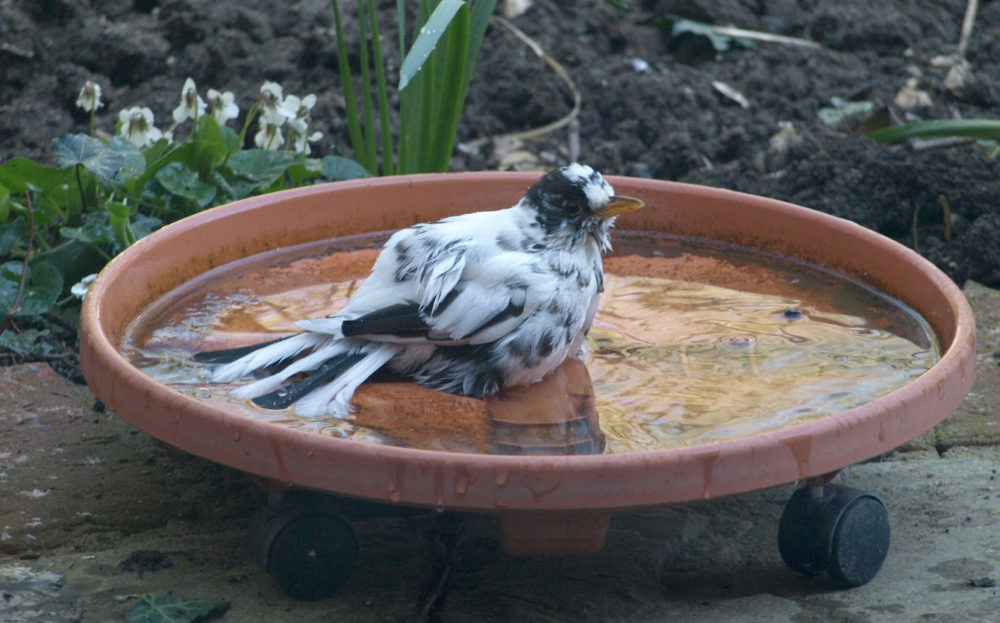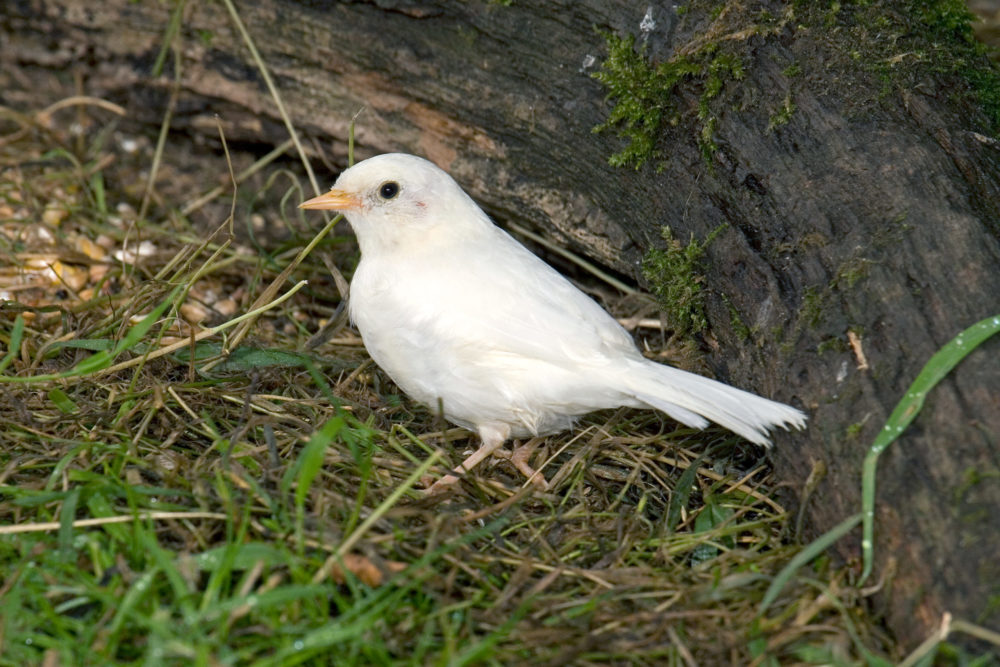Unusual plumage variation in birds not so black and white

From all-white magpies to white-winged sparrows, a leading wildlife charity is asking members of the Welsh public to get in touch if they spot birds with plumage abnormalities in their gardens.
Each year BTO receives multiple calls and messages from members of the public who have spotted something a little out of the ordinary in their garden.
These sightings often refer to a common bird, that doesn’t look quite right… a Starling with a white head? An all-white Blackbird? A Robin without its distinctive red breast?
Many birds can show unexpected plumage abnormalities, and ornithologists are hoping to unravel some of the mysteries relating to these widespread phenomena.
Ranges
There are numerous types of plumage aberration, ranging from birds with a few random paler or darker feathers, to full albinos, and several other variations in between.

Amongst the most common birds that get reported sporting odd plumage features are Blackbirds, and many homeowners across the UK report seeing unusual, pied variants in their gardens. Often, these distinctive birds will have a mixture of the regular black feathering with patches of white here and there. This is known as leucism – which is caused by a lack of the dark pigment melanin, and its absence results in white feathers.
This reduction in pigment can also result in weaker feathers, making them more prone to wear and tear. A bird with excessive leucism may find that it is less agile, as well as being more noticeable, and is therefore more likely to fall prey to predators. Also, a lack of pigment can reduce insulation qualities and such birds may suffer excessively in cooler conditions.
When melanin is entirely absent, pure albinos can occur, resulting in all-white birds with pink eyes. Sadly, the odds of these rare individuals surviving to adulthood are slim, due to associated issues such as poor eyesight.
Occasionally, the amount of melanin can be partially reduced in the feathers and birds can have a washed-out, pale appearance. This is known as dilution.
The reverse can also occur, and too much dark pigment can cause a rare condition known as melanism. This results in much darker birds, though this is often less obvious than leucism.
Some other rarer forms of pigmentation change include erythrism, where a chestnut-red pigment replaces certain other pigments, and xanthochromism, where there is an excess of yellow pigment, often replacing red feathering.
Santiago Cárdenas, Garden BirdWatch Survey Organiser, said “Since we launched the Abnormal Plumage Survey in 2011, we have received thousands of records. Blackbirds have, so far, been the real stars of the show, with many of the reports relating to this common garden species.
“However, many other birds, sporting a wide range of plumage abnormalities, have also been spotted. We still have a lot to learn about the distribution of such unusual birds, and we welcome all records from garden birdwatchers across the UK.”
If you happen to spot one of these exceptional birds in your garden, BTO would love to hear from you. To report your sighting, please visit the Abnormal Plumage Survey page on their website at www.bto/abnormal-plumage and submit your record.
Support our Nation today
For the price of a cup of coffee a month you can help us create an independent, not-for-profit, national news service for the people of Wales, by the people of Wales.




